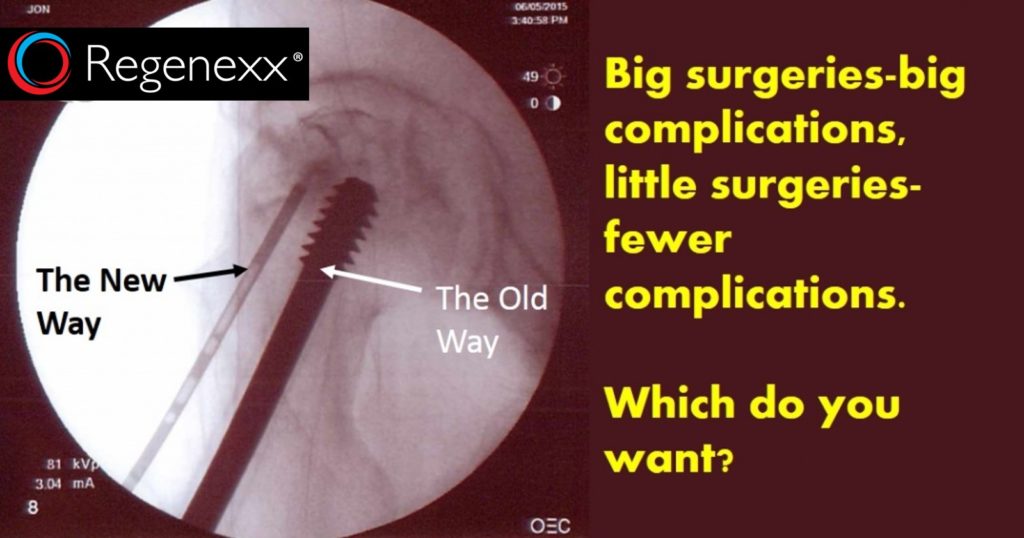Hip Osteonecrosis Stem Cell Treatment: A Picture Shows the Future
Dr. Schultz came to me the other day with the fluoroscopy picture above and commented that no one else in the world is doing this type of work. I took one look at the juxtiposition of two technologies and realized that while few doctors know how to do this type of hip osteonecrosis stem cell treatment now, that in 20 years, one of technologies would be mostly extinct. What do I mean?
Osteonecrosis is a horrible disease where a portion of the bone dies off. It can be caused by systemic things like anti-inflammatory steroid use or drinking too much alcohol. It can also be caused by a sudden interruption of the blood supply in bone. Such was the case above, where the patient sustained a fracture of the femur bone in the hip and the large metal fixator was placed to stabilize the area (labelled “The Old Way”). This resulted in the bone of the femur dying off due to the fracture and the interruption of blood supply by the large metal rod that was inserted.
What do I mean when I say that the big dark thing is the old way and the slimmer looking thing is the new way? The fixator rod shown is about the size of the technology used by most surgeons today to perform a “CORE Decompression” surgery. The concept is that a large tunnel (about the size of a ball point pen) is drilled into the femur and often a bone plug or something similar is placed. The trocar to the left of that was inserted by Dr. Schultz to place stem cells into the non-healing and dying bone. It’s much smaller because the concept is that minimal damage to the bone should be done getting the stem cells to the area, and that the cells will do the work of healing the bone.
The upshot? Right now, Dr. Schultz is right. Outside of our clinic and some of our Regenexx Network affiliates, the technology you see above is being used in only a handful of places. However, over the next 20 years, this will change, with big surgeries being replaced by smaller ones using stem cells and other orthobiologics – what we call Interventional Orthopedics. Again, big surgeries=big complications and little surgeries=less complications. So the picture above represents the future, juxtaposed against the past. Which technology would you chose?

If you have questions or comments about this blog post, please email us at [email protected]
NOTE: This blog post provides general information to help the reader better understand regenerative medicine, musculoskeletal health, and related subjects. All content provided in this blog, website, or any linked materials, including text, graphics, images, patient profiles, outcomes, and information, are not intended and should not be considered or used as a substitute for medical advice, diagnosis, or treatment. Please always consult with a professional and certified healthcare provider to discuss if a treatment is right for you.
